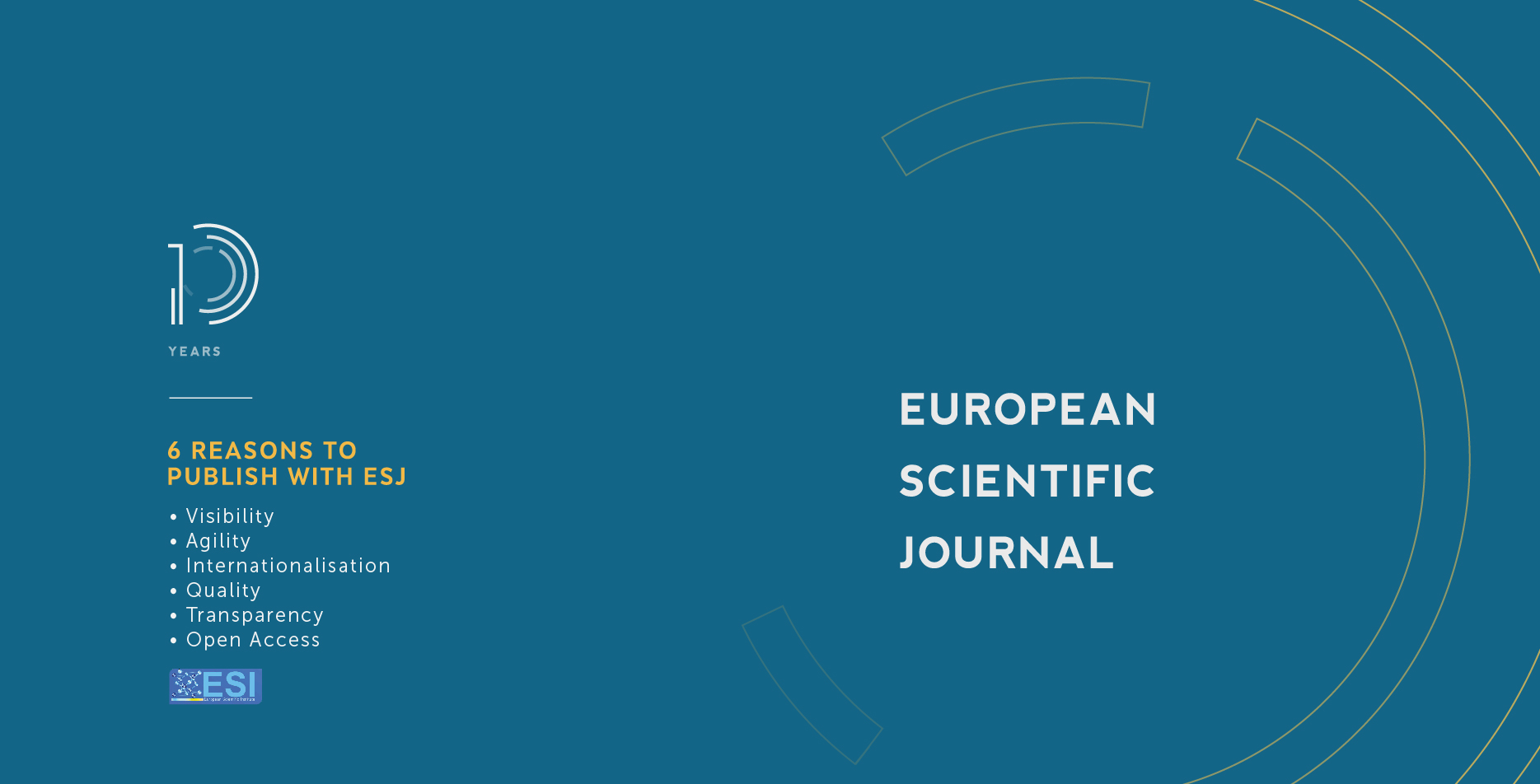Coverage of Science, Technology, and Innovation by Major Broadcast Networks in Nigeria: an Exploratory Survey
Abstract
This investigates the nature of reportage accorded Science, Technology, and Innovation (STI) matters by the African Independent Television (AIT), Federal Radio Corporation of Nigeria (FRCN) and Nigerian Television Authority (NTA). Science communication research is only beginning to feature in Nigeria as a key aspect of academic inquiry. However, science and technology broadcast has been going on for decades. The study aims at knowing the feedback those broadcast media houses have been receiving from the public about the dissemination of emerging science, technology, and innovation matters as well as the perception by the select broadcast houses of the contributions of Nigeria’s science community to specific areas of national development. The study adopts interviews as the instrument of data collection from senior correspondents directly involved with the selected broadcast houses' coverage and reportage of science, technology, and innovation. The major findings of the research are that not all the broadcast houses have science desks and science correspondents, although all the media houses under study cover STI matters; though in varying degrees and only the NTA has a science correspondent who is a science graduate. Also, the FRCN and NTA provide extensive coverage of STI matters with dedicated programs and segments for STI on their stations and correspondents covering major STI Agencies and the Ministry of Science and Technology Headquarters. It is recommended that broadcast media in the country should show greater commitment to the coverage of STI matters since the majority of audience members depend on the broadcast media for information on all aspects of life. Moreover, a content analysis of news bulletins of the selected broadcast houses and other news media should be conducted to have more data on the coverage of STI matter.
Downloads
Metrics
PlumX Statistics
References
2. Ancillotti, M., Holmberg, N. Lindfelt, M. & Eriksson, S. (2015). Uncritical and Unbalanced Coverage of Synthetic Biology in the Nordic Press. Public Understanding of Science, 26(2). Doi: 10.1177/0963662515609834.
3. Ayranci, Z, B. (2017). Use of Drones in Sports Broadcasting. Entertainment and Sports Law, issue 3, 79, 93.
4. Bankole, F., Batta, H., & Onifade, D. (2020). ‘Nigeria battling the odds: Science Communication in an African State.’ In: T. Gascoigne, B. Shiele, J. Leach, M. Riedlinger; with B. Lewenstein, L. Massarani, & P. Broks (Eds.) Communicating Science: A global perspective. (pp. 615-640). Canberra: Austrian National University Press.
5. Baran, S. J. and Davis, D. K. (2009). Mass Communication Theory: Foundation Ferment, and Future. (4th ed.). Belmont, CA: Thomson/Wadsworth.
6. Batta, H., Ali, H. M., Ekeanyanwu, N. T., Obot, C. & Batta, N. N. (2021). Interest and awareness of science communication in select academic programmes of six Nigerian universities. SAU Journal of Management and Social Sciences, 6(3): 1 – 21.
7. Batta, H., Ashong, C. & Obot, C. (2014). Science, nano-science and nano-technology content in Nigeria’s elite and popular press: Focus on framing and sociopolitical involvement. New Media and Mass Communication, 31: 9 – 19.
8. Boholm, A. & Larsson, S. (2019). What is the Problem? A Literature Review of Challenges Facing the Communication of Nanotechnology to the Public. Journal of Nanoparticle Research, 21(86). https://doi.org/10.1007/s/1051-019-4524-3.
9. Cacciatore, M. A., Anderson, A. A., Choi, D, Brossard, D., Scheufele, D. A., Liang, X., Ludwig, P. J., Xenos, M, & Dudo, A. (2012). Coverage of Emerging Technologies: A Comparison between Print and Online Media. New Media and Society, 0(0)1-21.
10. Callinan, P. A. & Feinberg, A. P. (2006). The Emerging Science of Epigonomics. Human Molecular Genetics, 15(1) R. 95-R101. Doi: 1093/hmg/dd1095.
11. African Independent Television (2022). About. Available at: https://www.nta.ng. Retrieved on January 20, 2022.
12. Nigerian Television Authority (2022). About. Available at: https://www.nta.ng. Retrieved on January 20, 2022.
13. Federal Radio Corporation of Nigeria (FRCN) (2022). Radio Nigeria. Available at: https:radionigeria.gov.ng. Retrieved on January 20, 2022.
14. Dvorsky, G. (2013). 11 Emerging scientific fields that everyone should know. Retrieved from http://www.google.com/amp/s/io9.igizmodeo.com/11-emerging-scientific-field-that-everyone-should-know-598729 on October 24, 2019.
15. Groboljsek, B., & Mali, F. (2012). Daily Newspapers View on Nanotechnology in Slovenia. Science Communication, 34(1): 30-56. Doi: 10.177/107555470 11427974.
16. Jewett, M. and Caplan, A. (2021). Synthetic Biology: Friend or Foe? Radio Health Journal.
17. Liang, X., Yi-Su, L., Yeo, S. K., Scheufele, D. A., Brossard, D., Xenos, M., Nealey, P. and Corley, E. A. (2014). Building Buzz: (Scientists) “Communicating Science in New Media.’ Journalism and Mass Communication Quarterly. Vol. 9 (4): 772 – 791. Doi:10.1177/1077699014550092.
18. Nationsonline.org (2022). Nigeria. Retrieved from https://nationsonline.org/oneworld/ Nigeria.htm.
19. Ogbodo, S. G. (2009). ‘Environmental protection in Nigeria: Two decades after the Koko incident.’ Annual survey of International Corporate Law, 15(1), 2. Retrieved from digitalcommons.law.ggu.edu/au/survey/vol.15/iss1/2. On 23 June, 2022.
20. Oxford & Business Group (2020). ‘Nigeria’s media landscape undergoes rapid change.’ Retrieved fromhttps://oxfordbusinessgroup.com/overview on 23 June, 2022.
21. Ramalho, M., Polino, C. and Massarani, L. (2012). From the Laboratory to Prime Time: Science Coverage in the Main Brazilian TV Newscast. Journal of Science Communication, JCOM, 11(2). Doi: 10.22323/2.102020.
22. Salleh, A. (2006). Public accepts Nano Risks if Benefits are High. ABC.
23. Shipman, M. (2015). ‘Nuance or Conflict? How News Stories can Influence Perceptions of Emerging Technologies’. Research and Innovation. https://news.ncsu.edu.
24. Soola, E. O. (2002). Development communication: The past, the present, and the future: Communicating for development purposes (Ed.) E. O. Soola (-pp. 9 – 29). Ibadan: Kraft Books Ltd.
25. Verghese, S. (2016). ‘A Comparative Analysis of the News Coverage and Content of Science and Technology in Two English Dailies.’ Anveshana’s International Journal of Research in Regional Studies, Law, Social Sciences, Journalism and Management Practices.’ Volume 1, Issue II.
26. Wilson, D. (2006). Fundamentals of human communication. (Ed.). Ibadan: Stirling-Horden Publishers (Nig.) Ltd.
27. Wycliffe, A., & Ayuya, V. C. (2013). Leveraging Science, Technology and Innovation for National Development in the Light of the Emerging Universities of Science and Technology in Kenya. Mediterranean Journal of Social Science, 4(2): 457-457. Doi:10.5901/mjss.2013.v4r2p457.
Copyright (c) 2022 Charles Obot, Herbert Batta, Iniobong Nda, Nnamdi Ekeanyanwu

This work is licensed under a Creative Commons Attribution-NonCommercial-NoDerivatives 4.0 International License.








